- Author Matthew Elmers [email protected].
- Public 2023-12-16 21:49.
- Last modified 2025-01-24 09:17.
In the past, the development of the rocket and space industry was directly related to military projects. Considering the threats of the future, the superpowers were seriously preparing to conduct battles in orbits and even created special weapons for this. In the mid-seventies, the USSR put into orbit the military space station "Almaz", on board which was the "Shield-1" artillery installation - the first and only one of its kind.

Secret project
According to known data, weapons for the space station were developed in the early seventies and tested in 1974-75. However, for a long time after that, the projects "Almaz" and "Shield-1" remained secret. Later, in the nineties, separate information began to appear, but they allowed only the most general picture to be drawn.
By now, new information has appeared. Moreover, even a prototype (or model) of an artillery mount was shown. However, the available data are still incomplete and sometimes contradict each other. Nevertheless, open information already allows the presentation of the goals, progress and results of the project.
It is known that the development of the Shield-1 product was carried out at OKB-16 (now KB Tochmash) under the leadership of A. E. Nudelman. The goal of the project was to create a special artillery installation suitable for use on spacecraft.
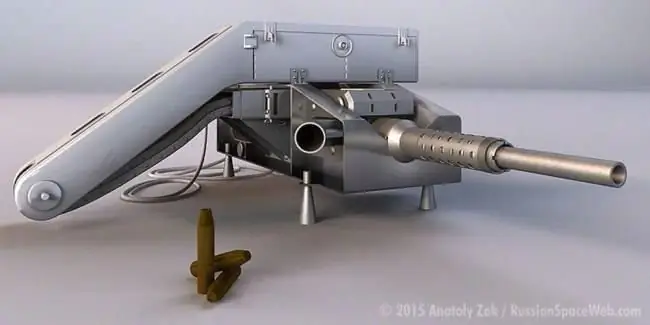
At that time, new military spacecraft were being created, and the customer was seriously afraid of opposition from a potential enemy. Using their spacecraft, the enemy could disable or damage Soviet satellites or orbital stations. To protect against such a threat, it was proposed to use some kind of weapons. First of all, the idea of installing a small-caliber automatic cannon was worked out. Then it was proposed to create a self-defense missile system.
Lack of information
For a long time, only the very fact of creating a cannon for spacecraft was known. It was also known that this system had a caliber of 23 mm and was based on one of the existing guns. This means that as part of the "Shield-1" could be used products NR-23 or R-23 developed by OKB-16.
In October 2015, the Zvezda TV channel made a great gift to all lovers of space technology and artillery. In the next issue of the "Military Acceptance" program, for the first time, they showed an experimental (or mock-up) sample of an artillery system for a spacecraft of the "Almaz" series. In addition, some design details were revealed in the transmission.
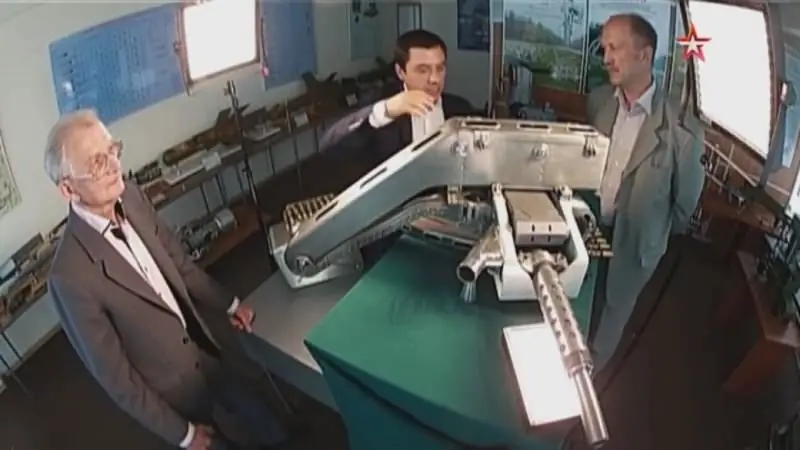
However, the surprise from Military Acceptance was ambiguous. The program answered some of the questions, but left new ones. The announced data on the name, ammunition, design, etc. did not correspond to the known data on domestic weapons. At the same time, the available amount of information on the topic has been seriously replenished.
Riddles from Zvezda
In the TV program, the space gun was designated as R-23M "Kartech". However, in the available literature under this name, a modification of the P-23 aircraft cannon appears for a special shot with ready-made striking elements - buckshot. However, in the case of the TV program, the product name appears to have been sourced directly from the developer.
The declared characteristics of the space system are curious. The TV program stated that it had a caliber of 14.5 mm and showed a rate of fire of 5000 rds / min. All this is not at all similar to the characteristics of the R-23, if it was not a matter of deep modernization.
Together with the cannon installation, ammunition strips were demonstrated. It was argued that a unitary telescopic cartridge with a fully recessed projectile was created for the space gun, similar to the 23x260 mm product for the R-23 cannon. However, the cartridges shown were noticeably less than 23 mm rounds. At the same time, they were clearly intended for the demonstrated weapon, as evidenced by the dimensions of the cartridge box and the feed path.
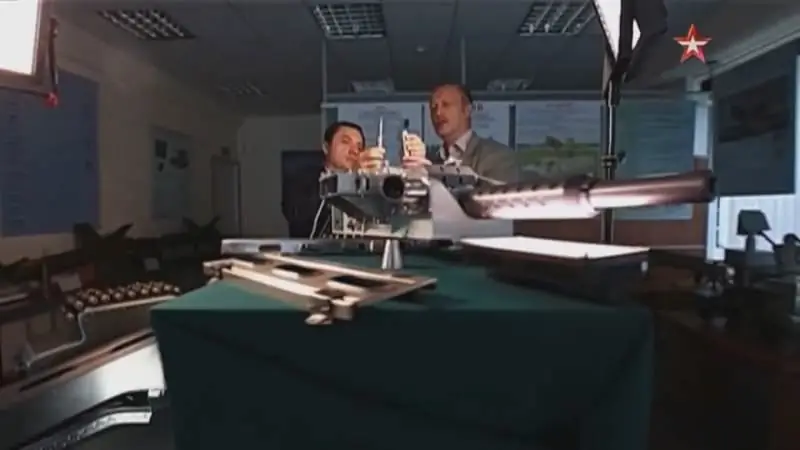
The description of the product in the TV show raises questions, but the demonstration of the real product is worthy of praise and gratitude. Before "Military Acceptance", the exact shape of the space weapon remained unknown.
Product from the screen
Consider the installation shown by Zvezda, both as a whole and its individual components. Fortunately, the alleged product "Shield-1" was shown in a fully assembled and partially disassembled state, which allows for a better study of it.
The artillery mount includes several main components. This is the automatic cannon itself, the frame for its mounting and the means for working with the ammunition. The layout of the installation is interesting. The frame with the gun is placed at the bottom, and a box of complex shape is installed on top of them, containing the cartridge belt. A sleeve extends from the side of the box, which feeds the tape to the weapon. On the left side of the cannon there is a rigid semicircular guide for the tape. On the right is a branch pipe for forward ejection of liners.
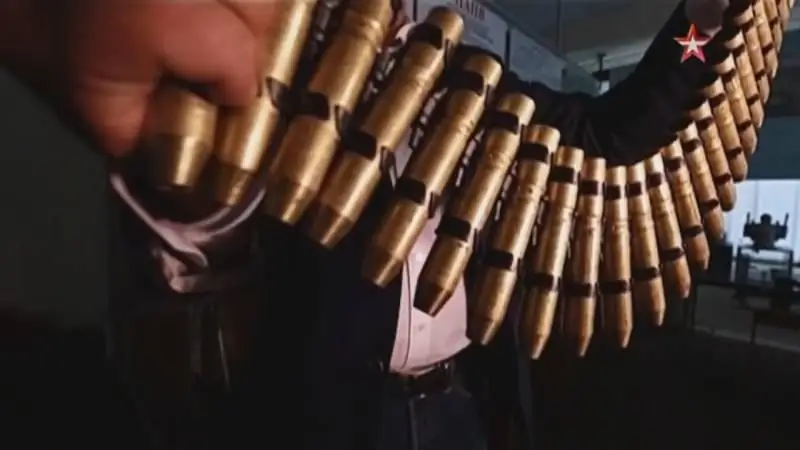
Recall that the basic R-23 was an automatic revolving cannon with three movable chambers. The rotating block of chambers was located at the rear of the receiver, and the tape receiver was placed above the breech of the barrel. The automation used a system of three gas engines operating in series. Special ammunition of the telescopic type was fed into the chamber with a shift back; the sleeve was thrown forward. Ignition was carried out using an electric trigger. A special scheme made it possible to reduce the size and weight of the gun while obtaining high combat characteristics.
Apparently, the museum space gun really had a caliber of 14.5 mm. In this case, in essence, it was a large-caliber machine gun, made on the basis of the R-23 gun. The main design solutions were retained, but the product was scaled for a caliber of 14.5 mm - and at the same time a telescopic cartridge was created according to the type of the existing 23x260 mm. This design could really show the rate of fire at the level of 5 thousand rds / min.
According to known data, the Shield-1 gun mount was to be rigidly mounted on the carrier spacecraft. Weapon guidance was carried out by maneuvers and turning the entire ship. It was proposed to compensate for the recoil of the weapon with shunting engines. The control was carried out using a separate control panel at the central post of the carrier ship.
Cannon in orbit
The Shield-1 product was intended for the Almaz station. The only prototype of such an installation was mounted at the Almaz-2 station, also known as Salyut-3. The launch of this station took place on June 26, 1974. A few days later, the Soyuz spacecraft departed for Almaz-2 with a crew of P. R. Popovich and Yu. P. Artyukhin.
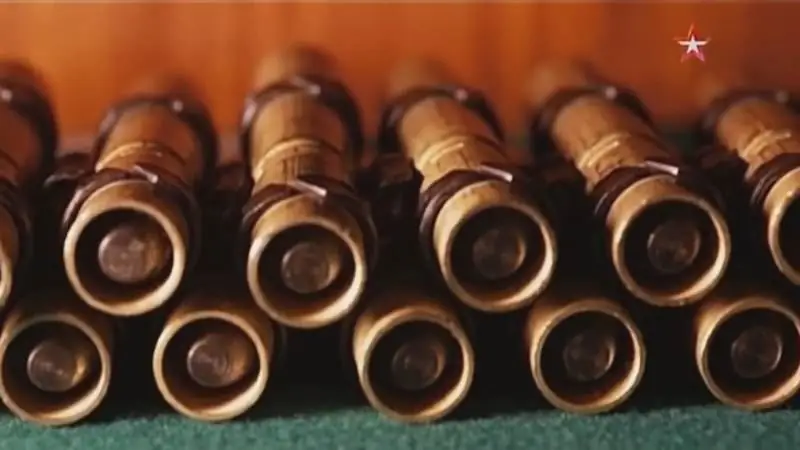
For a number of reasons, the gun mount was not tested with the crew. The shooting was carried out only on January 25, 1975 - and directly in front of the arch of "Salyut-3" from orbit. Already after issuing a braking impulse, the installation, on command from the ground, fired several shots. Over the next few minutes, the prototype burned out in the dense layers of the atmosphere along with the carrier.
Unarmed space
The first and last tests of the Shchit-1 installation took place in 1975. This development did not receive further development. By this time, the Shield-2 project had been launched, the purpose of which was to create a self-defense system based on a space-to-space guided missile. As far as we know, this complex was not brought to real tests.
Over time, the military revised their plans for the use of outer space and, among other things, abandoned the spacecraft armament. Further work on cannons or rockets for satellites and stations was canceled. As a result, the Shchit-1 / R-23M / Kartech installation remained the only one of its kind. To date, there are no weapons in orbit. Even pistols are excluded from the NAZ astronauts.
Almost 45 years have passed since the first and last tests of the space gun. Until now, the complete and accurate history of the Shield-1 project is not available in the public domain, which is why it has to be collected bit by bit, evaluating various data and sifting out some of them. It remains to be hoped that in the future, the domestic rocket and space and artillery industries will still talk about one of the most remarkable projects and answer the remaining questions. Project "Shield-1" and other bold developments are too interesting and important for history to be forgotten.






